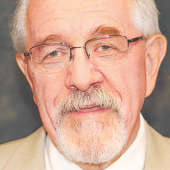- Christmas shopping is done, presents wrapped, strings attached? (12/14/16)
- Cecil is dead and human lives are threatened every day (8/12/15)
- As state flags go, Nebraska's ranks 50th (7/8/15)
- When everything looks like a nail (4/29/15)
- Who remembers to coal slurry pipeline debate? (3/11/15)
- More revelations in Department of Corrections mess (12/17/14)
- The Legislature becomes more Republican (11/19/14)
Opinion
School finance heads to full debate
Wednesday, April 24, 2013
When it comes to choosing sides on taxation and spending issues in Nebraska, it all boils down to whose ox is getting gored.
School finance is one of those issues that has historically -- the current formula is 23 years old (even though it gets tweaked every couple years) and school financing agreements were being made before Nebraska was even a state back in 1867 -- been a battle between large and small, the perceived "haves" and the "have nots."
In a few weeks, the current Legislature will address yet another set of proposed changes in LB407, a measure advanced 5-3 by the Education Committee and championed by chair Sen. Kate Sullivan of Cedar Rapids. As in the past, the changes are intended to reflect the current state of the economy. Stopgap measures, some would say. Band-Aids, according to others. Weeks of negotiation by the committee failed to reach a compromise by large and small school districts.
If one doubts that school finance is serious business in Nebraska, know that the Nebraska Council of School Administrators has a website dedicated strictly to the issue. The Nebraska Association of School Business Officials, an affiliate of NCSA, provides oversight.
The website explains the intricacies of TEEOSA, the Tax Equity & Educational Opportunities Support Act, which is the current school finance formula for Nebraska public schools. TEEOSA was originally enacted by the Nebraska Legislature in 1990 and amended numerous times since then.
The website says it best: "School finance has a direct correlation and consequence to children and their educational opportunities, their present lives and their future."
Any parent with children in school and/or any proponent of equity and quality of educational opportunities has a vested interest in school finance policy, within all levels of government.
"A direct consequence to children's lives and their future." Pretty ominous words to what often boils down to arguments between school lobbyists and the senators who propose or support changes.
"Even before Nebraska was a state, the responsibility to fund education has been shared between state and local sources," said Sen. Sullivan. "Just as school funding has been continually revised, we continue to study the formula to improve it and make it fit in current circumstances."
She said the bill makes two types of changes. The first would be permanent modifications; the second would phase in the scheduled return to permanent provisions that were temporarily modified over the last few years in response to economic conditions. Some of the permanent changes would allow tuition and transportation fees paid to other districts to be included in general fund operating expenditures. The teacher education allowance, the instructional time allowance, averaging adjustment and the local choice adjustment would be eliminated.
The phase in provisions would include a base limitation allowable growth rate (the amount the budget could grow) for school districts of 1.5 percent for 2013-14 and a local effort rate (the amount of local tax support) of $1.03 for 2013-14 and 2014-15. The base limitation rate for school districts was 0.5 percent for 2012-13 and would return to the permanent provisions of 2.5 percent for 2014-15. The local effort rate was $1.0395 for 2012-13 and would return to the permanent provisions of $1.00 for 2015-16.
During testimony on the bill in February, Hastings Public Schools superintendent Craig Kautz said the bill was not a perfect solution for his district, but the best proposal for the state because it is a collaborative effort. Ralston Board of Education President Linda Richards opposed the bill, saying that her district constantly has had to adjust and make sacrifices to accommodate a continually evolving aid formula.
The bottom line: smaller districts seemed to support the measure as advanced. Lobbyists for the larger districts vowed to take the fight to the floor of the Legislature. Such battles are generally messy and do have consequences. With the session in its final 30 days, time is of the essence.

